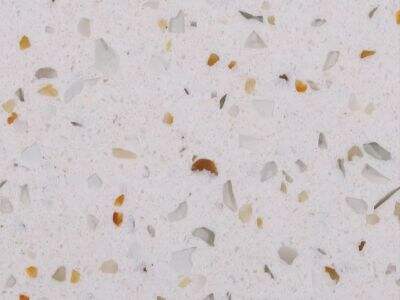In the olden days, countertops were created using wood and materials such as marble and granite. They used to be popular because they were natural and looked beautiful in our kitchens and bathrooms. Then, an alternative was found: compound quartz countertops. That new fabric revolutionized everything.

The Introduction of Engineered Quartz
The idea of artificial quartz by JESTONE was first introduced in the 1960s by Italy. As everyone should, but this type of things are slow to be accepted at the beginning because it kinda sucks. It was weak and couldn't have looked attractive. However down the line some brainy brains gathered and said hey they could make artificial quartz better, stronger. What they came up with was a way how to blend the right mix and made something that would last longer. Today, artificial quartz has been loved by many people in the world as a table because it is beautiful and practical.
The Evolution of Technology in Countertops
Years ago it was very costly and time consuming to have something as simple of a countertop that was made out of granite because technology had not advanced far enough. The granite had to be cut and shaped labour-intensively by skilled workers. Artificial Calacatta quartz slab was invented and the rest is history. All you need to do now is combine quartz crystals with a resin substance. Once mixed, you can form this mixture into anything and then bake it in an oven. All of this can be done over a few hours. In other words, individuals can have their countertops designed and created in a quicker, easier manner than ever before.
What Then Is Artificial Quartz Made Of?
An artificial substance, quartz is made from two separate materials which include resin and quartz pieces. Quartz is a potent mineral which have found in rocks of each place on the earth. The hardness of topaz provides a valuable characteristic as it will not scratch or stain easily, therefor making it an excellent choice for countertops. Resin is the other ingredient and it is a synthetic material that binds Classic quartz crystals so tightly, allowing for both non-porousness as well as structural cohesion between one crystal to another (and of course gives them their polished look). This molecular combination makes for durable quartz countertops, one that can withstanding a long period without breaking.
The Impact on the Environment
While artificial quartz is durable and can last a long time, it also comes with environmental drawbacks. Petroleum as it's obviously not environmentally friendly and non-renewable. Furthermore, the amount of energy required to produce artificial quartz countertops and waste they generate. That waste is dangerous to our planet. Unfortunately when artificial quartz countertops are disposed of they cannot be recycled or composted instead end up in landfills and pollute the air. We really have to think about how we are doing to the Earth with our choices and subsequently what WE will leave behind.
Artificial Quartz New Trends
Over the last while, we have seen some great strides that companies have been taking using artificial Colored quartz in more environmentally friendly ways. Recycling glass for compost heaps and into countertops to be more environmentally friendly Some are actually using new technologies to come up with ever more realistic designs in the finishes, a look that most homeowners and interior designers are looking for. A few companies are also experimenting with 3D printing to produce exclusive designs for their countertops. The result of this is that consumers can have counter-as tops functional and long-lasting but also environmentally friendly.

 EN
EN
 AR
AR
 BG
BG
 HR
HR
 CS
CS
 DA
DA
 NL
NL
 FI
FI
 FR
FR
 DE
DE
 HI
HI
 IT
IT
 JA
JA
 KO
KO
 NO
NO
 PL
PL
 PT
PT
 RO
RO
 RU
RU
 ES
ES
 SV
SV
 TL
TL
 ID
ID
 SR
SR
 UK
UK
 VI
VI
 TH
TH
 TR
TR
 AF
AF
 GA
GA
 BE
BE
 HY
HY
 AZ
AZ
 BN
BN
 MN
MN
 MY
MY
 KK
KK
 UZ
UZ
 KY
KY
 XH
XH



